Security cameras are widely used in both residential and commercial areas to enhance safety and provide ongoing monitoring of properties. They serve as a deterrent to potential criminal activities and help gather crucial evidence if incidents occur. However, while they offer security, their presence often raises privacy concerns. Some individuals might feel uncomfortable being constantly recorded in shared spaces or rental properties.
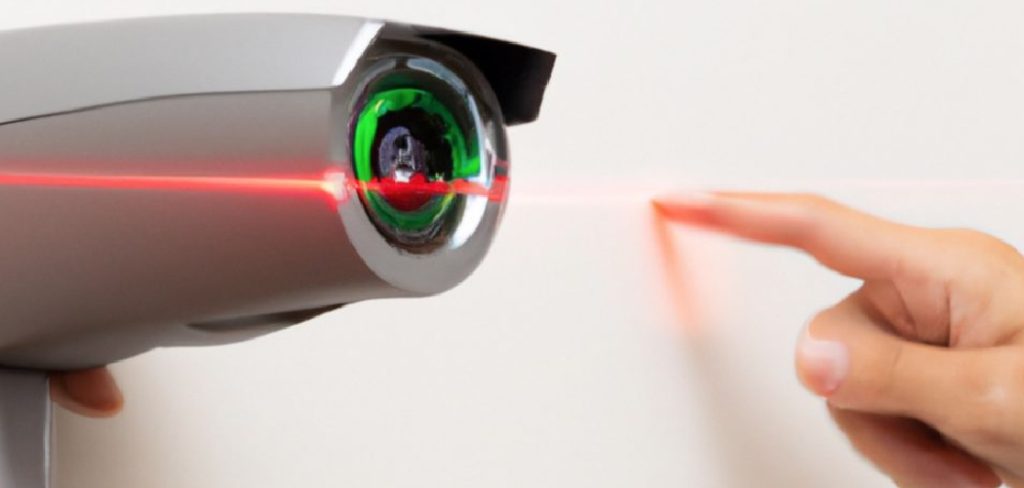
They may seek ways to ethically and legally prevent cameras from capturing their activities without infringing on others’ rights. Understanding how to navigate these privacy issues is crucial and leads some to query about “how to destroy a security camera” — a notion that highlights the frustration surrounding privacy intrusions. It is important to stress that one should respect existing privacy laws and understand the legal implications of tampering with or destroying someone else’s property, as there can be severe legal consequences.
Reasons to Disable or Block Security Cameras (Ethical and Legal Situations Only)
Privacy Concerns:
Individuals often face privacy challenges due to security cameras in various shared living environments, such as apartments, dormitories, or shared housing. While these devices are intended to ensure safety, they may intrude on personal spaces and create discomfort for constantly monitored residents. Public access areas, such as parks or community centers, are also sites where privacy concerns arise, prompting people to seek ethical ways to address these issues without resorting to illegal actions.
Removing Excess Surveillance:
The proliferation of security cameras in areas like rental properties or under Homeowners Associations (HOAs) can lead to over-surveillance, which impacts personal privacy and comfort. Individuals may find the constant observation overwhelming and seek methods to mitigate such surveillance.
In these cases, discussions with property managers or HOA representatives about repositioning cameras or adjusting their fields of view can be beneficial, ensuring a balance between security needs and personal privacy.
Preventing Security Vulnerabilities:
For those who have their own security cameras, it’s essential to take proactive steps to protect them from unauthorized access or hacking attempts. This involves implementing security measures like strong, unique passwords and regularly updating software. Additionally, utilizing features that allow users to temporarily disable cameras can prevent them from capturing sensitive activities, providing a legal method to block recording when necessary.
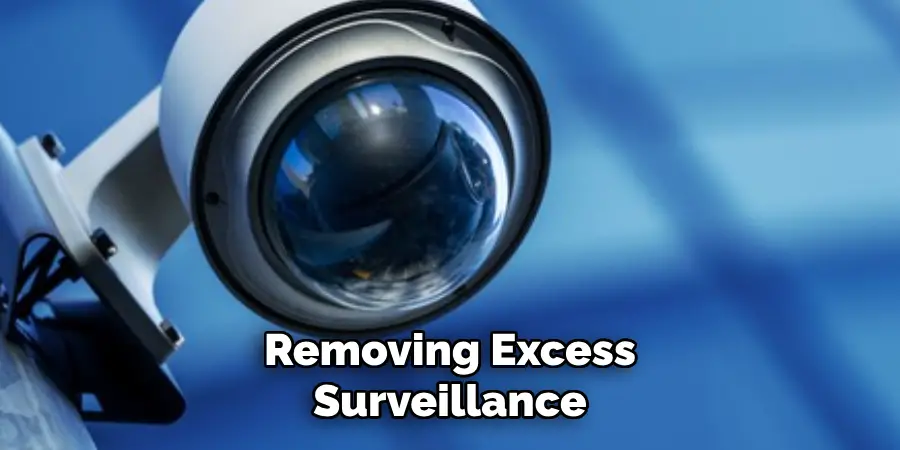
How to Destroy a Security Camera: Methods for Blocking or Disabling Cameras on Your Own Property
Using Privacy Shields or Covers:
In scenarios where you wish to ensure privacy temporarily, utilizing lens covers or privacy screens can be an effective method for cameras you own. These covers can be physical shields placed over the camera lens, effectively preventing recording until you choose to remove them. It’s advisable to select covers specifically designed for your camera model, ensuring a snug fit without damaging the lens.
Various types of privacy shields are available in the market, ranging from simple clip-on covers to more sophisticated electronic privacy screens that can be toggled on and off with a button. These tools provide an immediate solution for protecting your privacy during intimate gatherings or sensitive discussions in areas under surveillance.
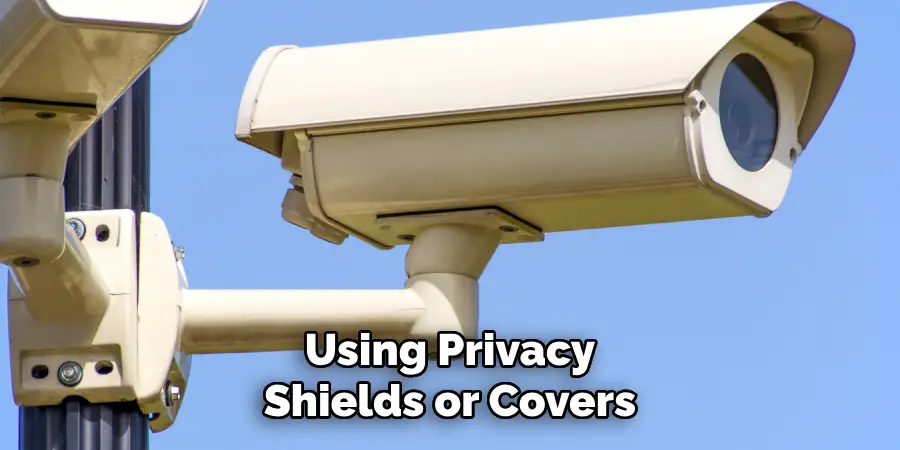
Adjusting Camera Angles and Positions:
Another approach to managing surveillance on your property involves carefully adjusting the angles and positions of your cameras. By repositioning cameras, you can avoid capturing unnecessary areas that you or others frequent, maintaining a level of privacy in intimate zones such as bedrooms, bathrooms, or private yards.
It is crucial to regularly review the fields of view of your cameras through their video feed or application interface to ensure they align with your privacy preferences. A simple mount pivot or a slight redirection can significantly change what the camera records. If your camera is mountable, consider experimenting with different placements that provide adequate property surveillance without infringing on more personal spaces.
Utilizing Camera Privacy Settings:
Modern security camera brands such as Ring and Nest offer a variety of in-app privacy settings that provide additional control over what your cameras record and when they record. These features include temporarily disabling recording or defining certain areas within the camera’s field of view as private zones where the camera will not record.
Setting up these privacy features generally involves accessing the camera’s application on your smartphone or through a web interface. Users can typically find options within the settings menu, like geofencing, which turns off recording when a user’s mobile device is detected at the location and resumes when the device moves away. It’s particularly effective to familiarize yourself with your camera brand’s specific settings and adjust them according to your unique needs and privacy concerns.
Additionally, configuring alerts to notify you of active recordings or unauthorized access attempts can further enhance your security, all while maintaining control over what your cameras capture. By utilizing these built-in features, you can ensure your surveillance system is both effective and respectful of your privacy needs, allowing you to create an environment where safety does not come at the expense of personal comfort.
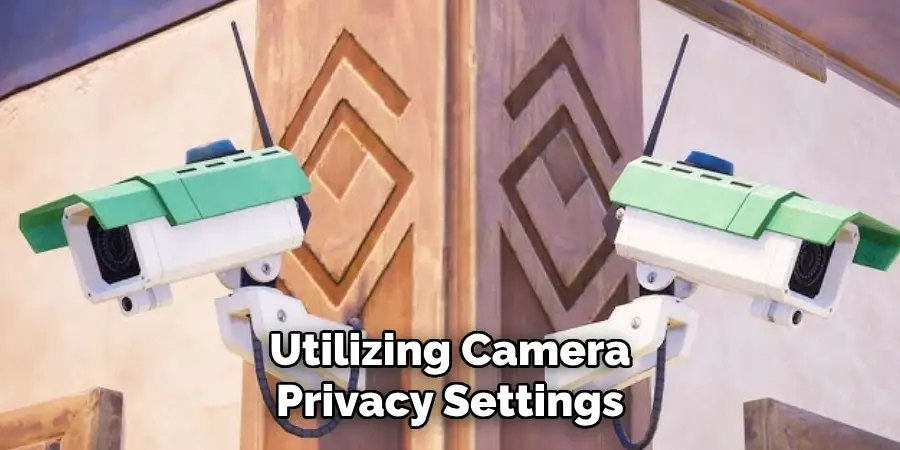
How to Destroy a Security Camera: Using Non-Intrusive Methods to Limit Camera Effectiveness
Using Landscaping and Obstacles:
One effective method to limit the effectiveness of intrusive cameras is to utilize natural landscaping elements. Trees, hedges, and fences can act as physical barriers that obstruct the view of security cameras, both on your property and those overlooking neighboring areas.
When strategically placed, these natural obstacles not only enhance the aesthetics of your property but also provide much-needed privacy. Consider planting dense and tall shrubs or installing lattice panels covered with climbing plants to form a natural screen that blocks camera views. When making these additions, always be mindful of property lines and local regulations to ensure compliance and avoid potential disputes.
Lighting Adjustments:
Strategic lighting adjustments can be an excellent tool to maintain privacy from security cameras. By using directed lights, such as spotlights or floodlights, you can create areas too bright for cameras to capture effectively, causing glares and overexposure in the footage. Conversely, low-light areas can also be maintained as private zones by reducing ambient lighting using dimmers or motion-activated lights that only illuminate essential areas when needed. This technique allows you to enjoy both privacy and illumination on your own terms.
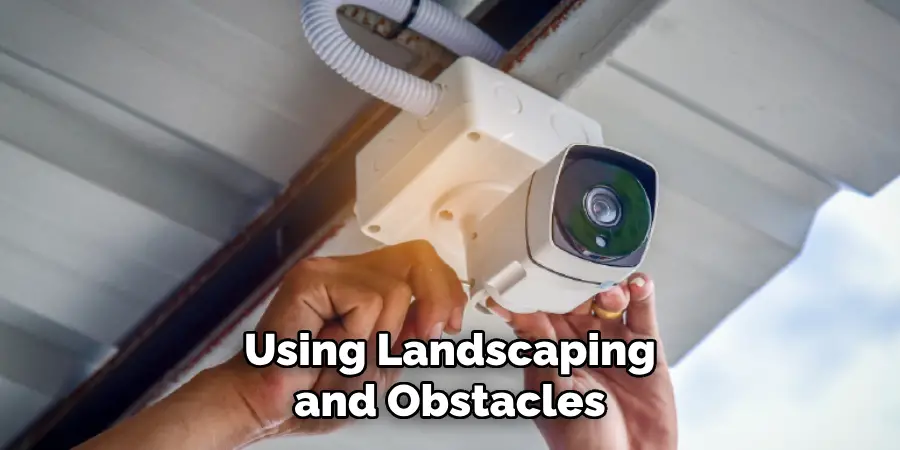
Window Treatments:
In your home, window treatments are crucial in protecting your privacy from external cameras. Options such as window films, curtains, or blinds offer a flexible and cost-effective solution. Window films can provide privacy while still allowing light to enter; some films even offer a one-way effect, preserving visibility from the inside. Curtains or blinds can be drawn to obstruct views when privacy is especially desired. By tailoring these treatments to your style and needs, you can enjoy the comfort of your home without the sense of being watched.
Legally Disabling or Disrupting Cameras Owned by Others
Requesting Camera Repositioning or Adjustment:
If a neighbor’s or property manager’s camera is intruding on your privacy, it might be worthwhile to first address the situation through a polite conversation. Express your concerns calmly and clearly, explaining how the camera’s position affects your privacy. Many people are willing to adjust the angle or position of their cameras to avoid capturing unnecessary views if approached respectfully. Suggesting reasonable solutions and remaining open to compromise is beneficial in maintaining a cordial relationship.
Using Privacy Masks:
Some advanced cameras have privacy mask features, allowing users to block specific areas within the camera’s field of view. If a neighboring camera supports this function, you might discuss enabling privacy masks to cover zones encroaching on your private spaces. Demonstrating your understanding of the technology can facilitate constructive dialogue and lead to agreeable adjustments that protect your interests without impeding security.
Reporting Inappropriate Surveillance:
In cases where cameras violate privacy laws or regulations, such as capturing intimate zones or being overly intrusive, you can report the situation to authorities like landlords, homeowners associations (HOAs), or local regulatory bodies. Document surveillance evidence, including photographs and timestamps, to support your claim. Authorities can often mediate conflicts by advising on legal compliance and ensuring surveillance systems respect personal privacy and property boundaries.
Technical Solutions to Protect Your Own Cameras from Tampering
Securing Your Cameras Against Interference:
Consider installing tamper-proof covers and secure mounts to protect your cameras from physical tampering. These are designed to deter unauthorized access by providing robust physical protection. When selecting a cover, opt for weather-resistant materials that can withstand environmental elements.
Secure mounts should be anchored firmly, ideally in hard-to-reach locations, to prevent them from being easily adjusted or dislodged by intruders. Additionally, regularly inspect your cameras for signs of physical tampering and ensure that all fixtures remain intact and secure.
Enhancing Digital Security:
Strengthening your network security is crucial to prevent hacking or unauthorized camera access. Start by setting strong, unique passwords for each camera and regularly updating them. Employ WPA3 encryption on your Wi-Fi network to enhance protection and limit access to trusted devices only. Use a dedicated VLAN (Virtual Local Area Network) for your security cameras to segregate them from other devices, minimizing the risk of cross-network breaches. Installing firewalls and enabling network monitoring adds an extra layer of protection against potential cyber threats.
Motion Detection Notifications:
Motion detection alerts are a valuable tool for monitoring potential tampering attempts. Configure your cameras to send notifications to your devices when motion is detected. This allows for real-time monitoring and immediate response if suspicious activity occurs near your surveillance equipment. Adjust sensitives and detection zones to minimize false alerts while ensuring coverage of critical areas, helping you maintain a proactive stance on camera security.
Legal Considerations and Consequences
Privacy Laws:
Understanding privacy laws is crucial before tampering with or disabling cameras that are not your own. In many jurisdictions, it is illegal to interfere with others’ surveillance devices, as they are often protected under property rights and privacy laws. These laws are designed to ensure that security measures do not infringe upon personal freedoms, and violating them can lead to serious legal consequences.
Consequences of Unauthorized Camera Interference:
Unauthorized interference with someone else’s cameras can result in significant penalties. Depending on the jurisdiction, these may include fines, criminal charges, or civil lawsuits. The legal system strongly discourages actions that disrupt security devices, emphasizing respecting property rights and maintaining lawful conduct.
Alternatives to Consider:
If you feel that camera interference is necessary to safeguard your privacy, seek legal and respectful alternatives. Consider mediation, legal advice, or involvement of local authorities to resolve disputes amicably. These approaches help ensure compliance with laws while protecting your privacy interests without resorting to unlawful actions.
Conclusion
In navigating the complex landscape of security cameras, it is essential to employ ethical and legal methods to protect personal privacy while respecting the legal boundaries surrounding surveillance equipment. While curiosity might lead some to search for extreme measures, like “how to destroy a security camera,” it is crucial to focus on non-intrusive solutions that ensure both privacy and compliance with laws. Strategies such as engaging in dialogue, utilizing privacy masks, or seeking mediation provide effective avenues to address privacy concerns without infringing upon others’ rights.
Additionally, securing one’s surveillance equipment against tampering and embracing digital safety measures further balances security with individual freedoms. Staying well-informed about local privacy laws and the potential consequences of unlawful actions ensures responsible conduct and mutual respect. As global privacy landscapes evolve, striving for a balance between privacy and security remains an ongoing commitment for both individuals and communities.
